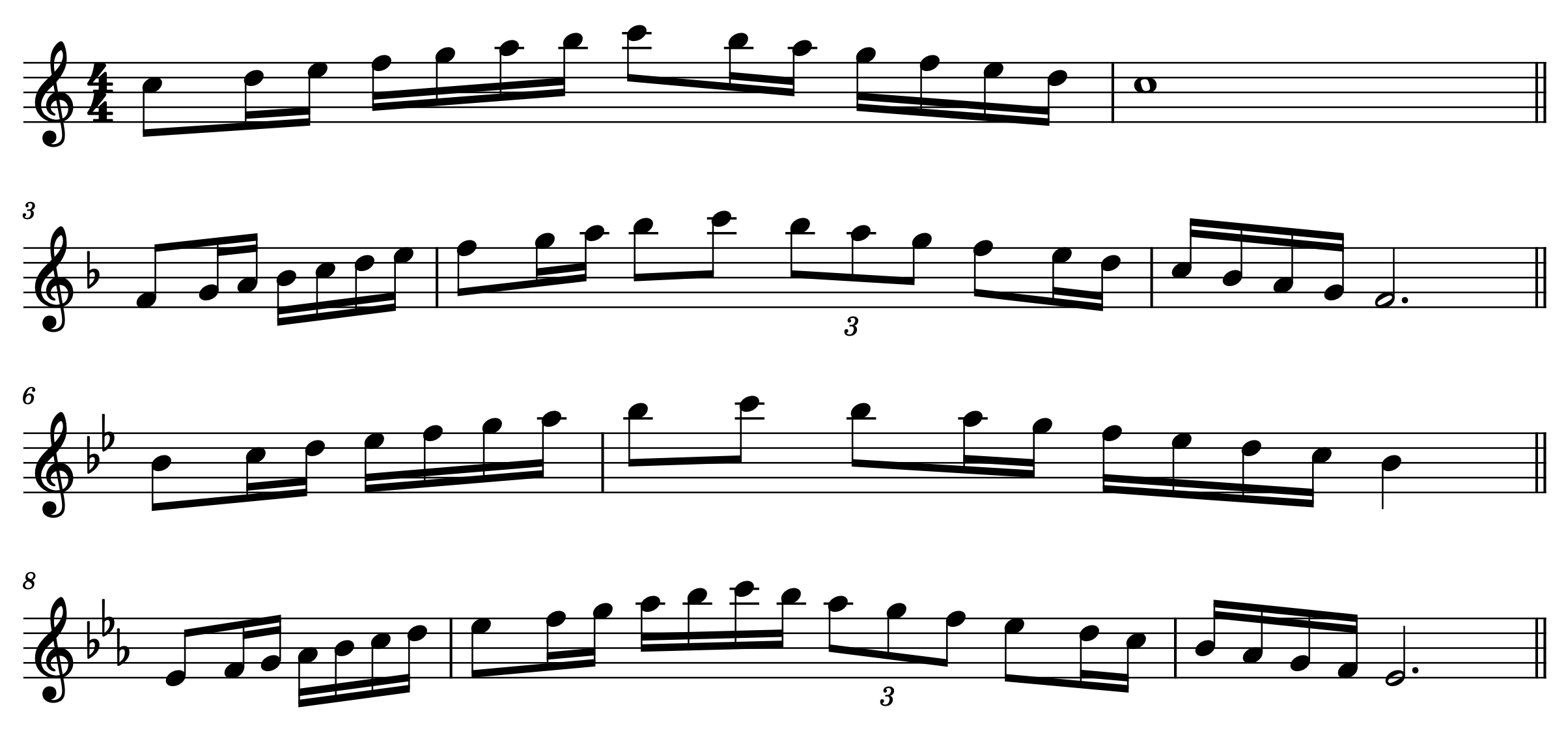In David McGill’s book Sound in Motion: A Performer’s Guide to Greater Musical Expression, he recommends practicing all scales to both the top and the bottom of the instrument’s range. Experimenting with this advice a year ago, I wrote out major scale variations so that they all start in the mid-range, go up to high C (C6) or C♯, and then end on low C (C3) or C♯.
That has turned out to be a little too difficult, and it hasn’t been helping me work on modifying my aperture to be less spread in all ranges. So, last week I made another version. This one starts in the mid-range, goes up to high C, and returns to the mid-range starting note. It looks like this:

Sample from “To the High Cs”
For now, I am doing these slowly, quarter note = 50 or so. I’m doing them all slurred because I’m concentrating on continuous air flow; I can add the tongue later. I’m paying most attention to these factors:
- Open, clear high notes, with a kind of head-voice resonance in the back of my throat. If it starts sounding pinched, I rest for a moment and try it again.
- Accuracy on the way down.
- Not rushing on the way down.
The entire exercise is here; feel free to download it and try it out.